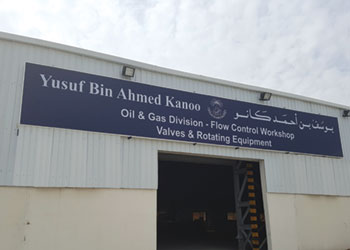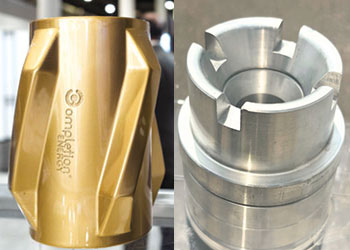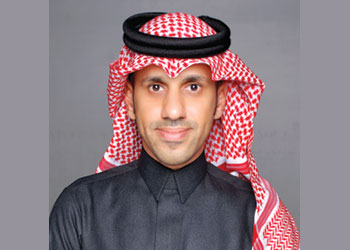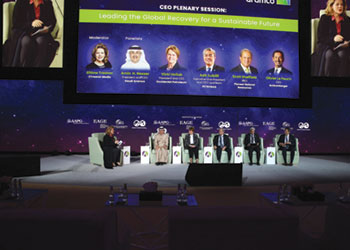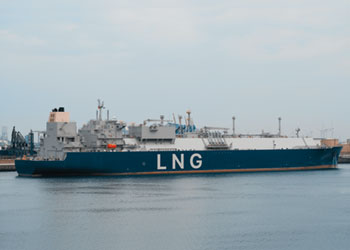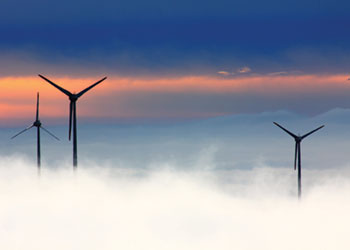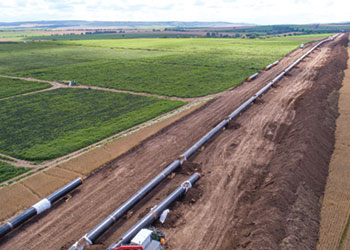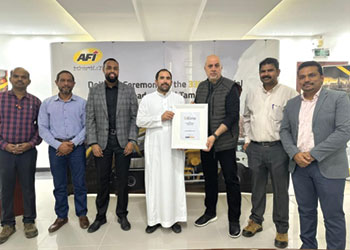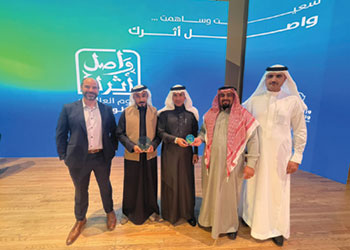
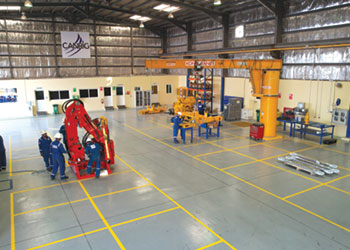 Nabors' recently expanded KSA manufacturing facility
Nabors' recently expanded KSA manufacturing facility
The company has been leveraging its core competencies in drilling, engineering, automation, data science and manufacturing to innovate the future of energy and enable the transition to a lower-carbon world, officials tell OGN
As new industry megatrends, such as digitalisation, automation and decarbonisation, take hold, Nabors stands at the forefront of drilling innovation, delivering technologies and solutions that are transforming oil and gas operations in the region.
In an exclusive interview with OGN energy magazine, Siggi Meissner, President, Energy Transition and Industrial Automation, and Subodh Saxena, Senior Vice-President, Technology and Services, from Nabors Industries, discuss recent efforts to bringing the future of drilling to the Middle East and how Nabors is supporting Saudi Arabia’s Vision 2030.
Tell us a little about Nabors.
Saxena: Most people see Nabors as a drilling contractor. The reality is Nabors is a leader in advanced technology for the energy industry.
We have operations in about 15 countries and have established a global network of people, technology and equipment to deploy solutions that deliver safe, efficient and responsible energy production.
As the industry has evolved, we have been leveraging our core competencies, particularly in drilling, engineering, automation, data science and manufacturing, to innovate the future of energy and enable the transition to a lower-carbon world.
So, while we do have a global footprint of drilling operations supporting our customers around the world, our portfolio is much broader.
 |
Meissner and Saxena (right) ... supporting Vision 2030 |
What about your operations in Saudi Arabia? Bring us up to speed with your efforts in-kingdom and anything else you have been working on.
Meissner: We have a long history of operating in the Kingdom. Perhaps, most visibly is our 50-50 joint venture with Aramco, known as SANAD.
SANAD has nearly 50 active rigs in Saudi Arabia and a runway to activate as many as 50 new build rigs over 10 years.
Canrig, a division of Nabors, has also been very active in the region. Last year, we expanded our manufacturing facility in Saudi Arabia, where we predominately provide regional value and support with new manufacturing builds and repair, recertification, and rebuilding services for Canrig and customer drilling equipment.
To support future growth and expansion in Saudi Arabia, we are opening a new regional office in February 2024, which will feature our state-of-the-art Rigline 24/7™ Center and provide world-class customer service and remote support for all Nabors services and technology.
The goal is to help transform Middle East operations and support the kingdom’s recent transformation and Vision 2030 for economic diversification and global engagement.
In the last few years, Nabors has also established and been pursuing several energy transition initiatives to support the broader industry’s decarbonisation efforts.
Our guiding vision is to help deliver 'energy without compromise' by using technology to overcome the challenges and tradeoffs between hydrocarbons and clean energy.
 |
SmartPOWER ... using AI to optimise rig engine management |
Our venture portfolio is made up of several companies across concentrated solar power, geothermal and energy storage, and we are pursuing several internal projects in hydrogen and advanced materials.
The world needs clean, renewable, dispatchable and scalable power and we are working with our portfolio companies to achieve it.
What else are you excited about as you look ahead for the Saudi market?
Saxena: I would highlight the work we are doing to bring the future of drilling to the Middle East.
Deploying our digital and automated solutions has the potential to drive huge performance improvements in safety, efficiency and sustainability.
In the last year, Nabors has upgraded several SANAD rigs with our SmartROS™ rig operating system, equipping those rigs to run leading edge digital and automated technologies that have been proven and heavily utilised in the US.
These technologies deliver safe, consistent and repeatable outperformance across rig fleets. In early deployments, connection times on rigs running SmartROS have been reduced significantly.
More recently, Nabors was awarded the first tender for automation and will be providing services to Aramco in the Kingdom.
This achievement validates the efficacy of our cutting-edge technology solutions, which focus on digitalisation, automation and lowering the carbon footprint of operations.
We plan to deploy on multiple rigs in early 2024, some of which are non-Nabors rigs.
We are also excited about introducing our Red Zone Robotics (RZR) Rig Floor Automation Module to the region.
Equipping a land rig with the RZR system enables companies to fully automate routine drilling operations.
The hands-free pipe handling operation means you can clear crews from hazardous redzone workspaces, such as the rigfloor and derrick, and deliver consistent repeatable outcomes without compromising performance.
In fact, one of the systems has been working on a Nabors rig in West Texas, one of the most competitive drilling basins in the world. Just recently, our customer recognised the rig as a top performer in its fleet.
Lastly, we are also seeing great success of our digital and automated solutions in Iraq through our collaboration with Halliburton.
Through initial deployments of our technologies, non-Nabors rigs increased rate-of-penetration by as much as 40 per cent.
Are there other benefits to automation?
Meissner: I would say the other piece is delivering responsible operations. Efficiency means fewer days on well and, therefore, a lower carbon footprint. So, by drilling more efficiently, we can drill more responsibly.
Nabors has also established a purpose-built portfolio of technologies specifically to lower emissions from drilling operations. We have been piloting many of them in the region.
Do rig upgrades present a challenge for deploying automation?
Saxena: Outperforming in today’s drilling environment requires an AC rig. Recognising this would be a prerequisite for most of the rigs in Saudi, and our team has worked to simplify upgrades.
Historically, DC to AC rig conversions required that the rig be rebuilt entirely – until now.
By swapping the existing DC top drive and DC drawworks with AC models and adding a compact drillers’ cabin equipped with built-in drives to power and control the top drive and drawworks, an upgrade can be performed during a rig move.
Using this method, an older rig can be outfitted to interface with new technologies to capture efficiency gains within a significantly shortened timeline.
Any final thoughts?
MEISSNER: Just that we are excited to continue delivering for our customers in the region and to extend our long-standing leadership position in these new areas such as digitalisation, automation and decarbonisation.
We encourage everyone to stop by our booth at the International Petroleum Technology Conference (IPTC) in Dhahran, Saudi Arabia from February 12-14, 2024.
We will be showcasing many of these technologies and successes and will have our subject matter experts there to answer any questions you may have.



















































































